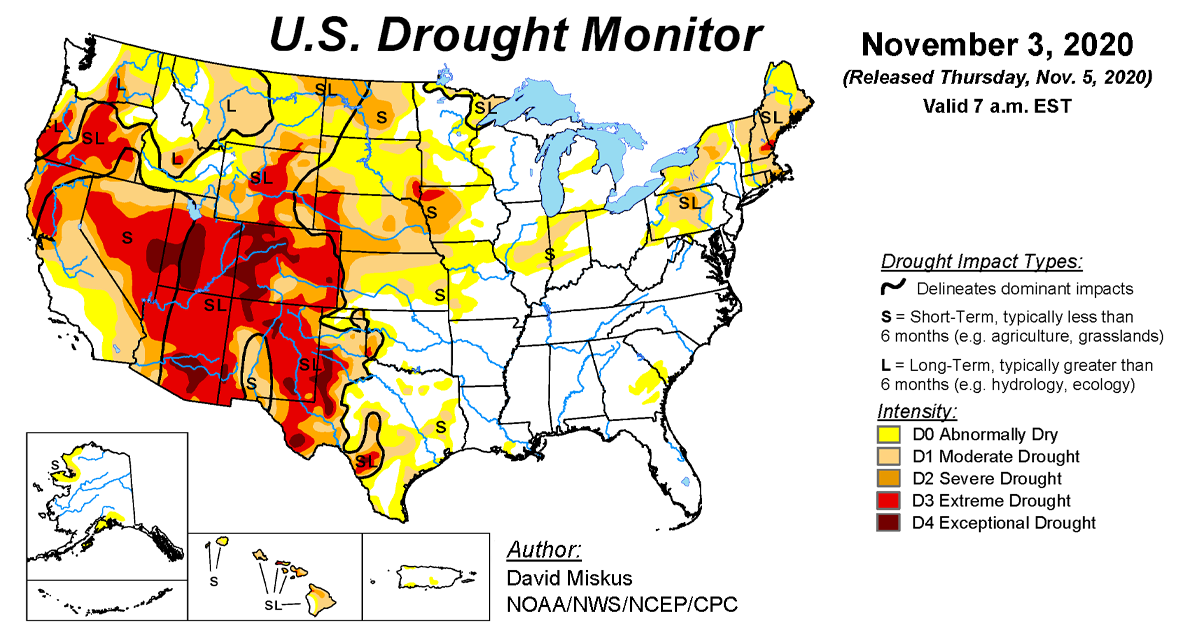
According to the November 3, 2020, U.S. Drought Monitor, moderate to exceptional drought covers 37.9% of the United States including Puerto Rico, a decrease from last week’s 38.8%. The worst drought categories (extreme to exceptional drought) decreased from 15.1% last week to 14.8% this week.
Hurricane Zeta moved rapidly across the central Gulf of Mexico coast to Mid-Atlantic coast, rapidly followed by a strong upper-level low-pressure system that moved out of the Southwest and Deep South. A surface low and frontal system accompanied the upper-level system. This combination of systems dropped heavy rain across parts of the southern Plains, Southeast, Ohio Valley, Mid-Atlantic, and Northeast.
Another upper-level trough moved across the eastern contiguous United States during the latter days of the week. Meanwhile, a strong upper-level ridge re-established itself over the western contiguous United States. This pattern of western ridge and northwesterly flow over central North America funneled cold Canadian air into the middle third of the contiguous United States during the last half of the week. The end result was below-normal weekly temperatures from the southern Plains to Great Lakes and Northeast, and warmer-than-normal temperatures over much of the West and coastal Southeast states.
It was drier than normal across the West, central to northern Plains, and Great Lakes, and parts of southern Texas and central Georgia to southeastern North Carolina. The week was also drier than normal across much of Hawaii. Drought contracted where tropical moisture fell from the southern Plains to Northeast, but expanded in the drier parts of Texas, across parts of the West and central Plains, and in Hawaii. Drought contraction was more than expansion, so the overall U.S. drought footprint decreased again this week.
Abnormal dryness and drought are currently affecting over 108 million people across the United States including Puerto Rico—about 34.9% of the population.

The full U.S. Drought Monitor weekly update is available from Drought.gov.
In addition to Drought.gov, you can find further information on the current drought as well as on this week’s Drought Monitor update at the National Drought Mitigation Center. See their recent news releases.
The most recent U.S. Drought Outlook is available from NOAA’s Climate Prediction Center and the U.S. Department of Agriculture provides information about the drought’s influence on crops and livestock.
For additional drought information, follow #DroughtMonitor on Facebook and Twitter.



